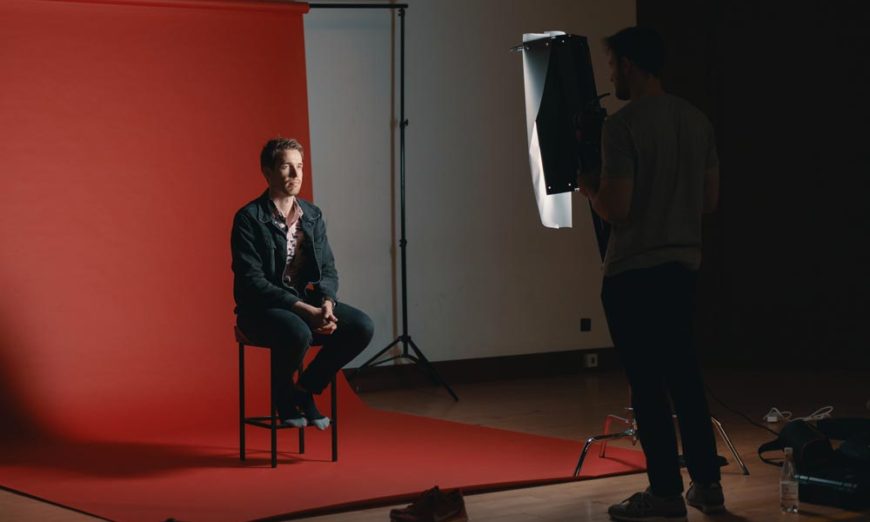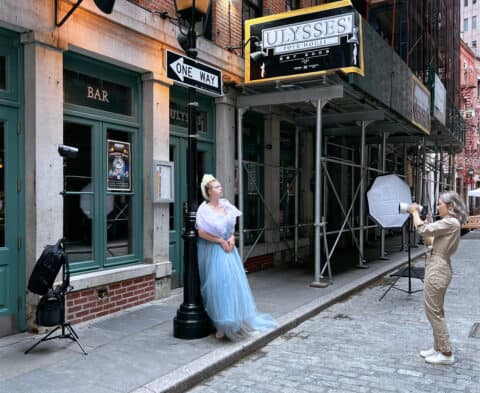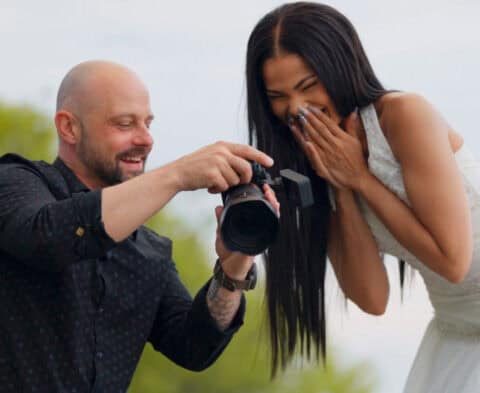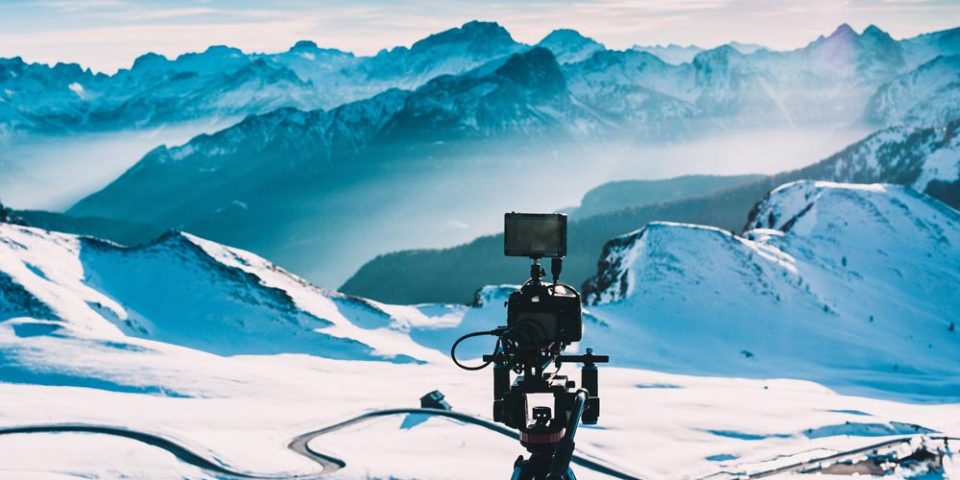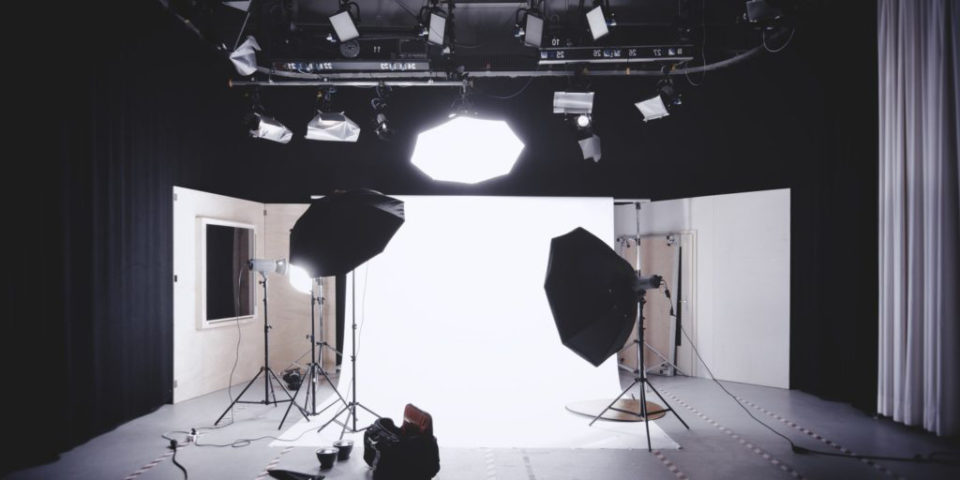Good Video Needs Great Light
Want to make professional looking videos? Great lighting is a key element! So, join me as I share the secrets and techniques of the Pros, that you can easily do in your own projects!
Getting Started with Lighting
Before we look into the type of lights, let’s learn a little bit about how light works. Light is a complex thing that is both a particle and a wave from the view of physics. Simply, this means that light moves in a straight line unless otherwise influenced. Light does not bend, unless in the presence of a massive gravity well, it does not wrap, and it does not turn corners. Sorry to burst some misleading bubbles, so let’s move on to the reality of using light like a Pro.
Rule #1 – A Large Source is a Soft Source
The larger the source of light, the softer the light looks. Try this at home. In a darker place, turn on the flashlight in your smart phone and point the flashlight at your hand at an angle. Hold your phone about six inches away from your hand. Note the harsh edges of the shadows and the significant brightness difference between the lit and shadow areas. Now put your hand about six inches away from an active light bulb. See how the shadows are much less harsh? A larger source produces a softer light when measured at the same distance to the subject.
Rule #2 – The Closer the Light the Softer the Light
This one is sometimes hard to conceptualize, but it is absolutely real. We will use our Sun in this example. The Sun is roughly 93 million miles away. Think of the look of light on a clear and cloudless day. The Sun is very far, and the shadows are quite strong and harsh. Now think of exactly the same place and the same time on a day that is overcast. Would you say that the light is softer? Of course, you would, because the shadows are much less harsh, and we actually see MORE detail in our subjects as a result. Did the distance to the Sun change? It did not, but by putting clouds in the way, the clouds become the source and are much closer so we get much softer and typically nicer looking light.
Rule #3 – Diffusers Do Not Soften Light
A diffusion cover or diffusion film placed directly in front of a source does not soften the light because it does not change the size of the light. All it does is reduce the intensity of the light. For diffusion to work, it must be between the light and the subject and be very close to the subject while some distance from the source to be really effective. The cloud is a diffusion screen in Rule #2. So those little flash covers or gels that sit right on the surface of the light do NOTHING to soften light. Successful use of diffusers is all about placement.
Rule #4 – Brightness Projects, Shadows Recede
We see in three dimensions, but our videos are in two dimensions. In order to create depth, we must have areas of light and shadow. Areas that are brighter look closer than areas in shadow. Use this principle to create the sense of depth in your projects. Lighting is a game of inches, so simply moving the light a bit will change where shadows fall and will change the way depth is perceived.
Rule #5 – Light Obeys the Inverse Square Law
If you have a handheld incident light meter this is really easy to demonstrate, but if you don’t you can check it with your camera’s built in meter in spot meter mode. Place a light source one foot away from a subject and take a meter reading. Now move the subject two feet away from the light and take a meter reading. The measured brightness will be one quarter the brightness at two feet than the brightness at one foot. So, if you want your background to go dark, simply move your light and subject farther away.
Rule #6 – Light Has Colour and Colour Impacts Emotional Response
The human brain does amazing things to make different colour temperatures of light look white to our eye. However, we respond emotionally to different colours of light in a video project when the colour of the light is allowed to show. Some lights have what is called variable colour temperature. This is useful if you are trying to match a number of light sources and are using a colour meter to do it. It’s very hard to do by eye, because your brain is wired to try to make all light colour look like white. A more useful technique is to use gels on your lights to change their colour temperature. An orange gel will warm the light, and a blue gel will cool the light. A green gel can be used to give a “matrix-look” to your footage, these are often used to subconsciously create a feeling of sickness. Experimenting with different gels is very powerful and you can get kits at Henry’s. To start out, get a colour correction kit which is what pros use to create subtle effects that are less obvious.
The Lee Filter Studio Magic Kit is a great one to start with.
Rule #7 – It’s Not Just What You Light, But Also What You Don’t Light
The idea of controlling what you light is what sets a great lighting specialist, known in the industry as a Gaffer, from someone still learning. What we want to do here is use some simple tools and options to block the spill of light into certain parts of our scene. We do this with what are called Flags, Cutters or Gobos. Gobo stands for Go-Between, because they go between the light and the subject. I like to start people out with black foamcore because it is cheap and you can cut it into shapes if needed, plus it is easy to find in dollar stores and the like. Alternatively, you can use a dense black fabric. Most often you will find this pre-cut and sewn for flag and cutter frames that you mount to a light stand with a knuckle. Once you decide where you want the flag/gobo to be, you need to fix it in place.
For lightweight flags made from foamcore, you will want some inexpensive light stands, some clamps that we call Justin clamps as in Just-in-time and a roll of gaffer tape. I’ve placed some links below to some really strong value offerings.
This looks like the respected professional level Manfrotto spring clamp but has an accessory ball head to attach small items to
Cameron Light Stand LS-6N Light Stand
This is a very lightweight light stand that extends to just over six feet high. I do not recommend it for anything with any kind of weight, but it is perfect for hanging flags
Gaffer tape should be in any creative’s kit. It looks like duct tape but leaves no residue behind and adheres well without removing the underlying surface when peeled off. Use to hold flags and gobos in place, run a strip over cables so they don’t make a tripping hazard, tape the XLR plug to the microphone in case your talent thinks that he or she is Roger Daltrey and wants to make a windmill. At about $25 it’s one of the most useful tools around.
Light Types
In order to light your videos well, you will need continuous lighting. We can find many types, including fluorescent, high intensity discharge (HID) lights and LED panels. LED panels are the longest lasting and easiest to transport and are typically very lightweight so that’s the kind of lighting we will spend our time on in this article. Let’s look at three different levels of lighting.
Run and Gun On-The-Go Video Lighting
In this case, we are going to look at lights that you can reasonably mount to your camera accessory shoe and that run on batteries. I will recommend the largest light possible because of Rule #1.

This Godox LED64 lamp is about $40 and does a terrific job for on the run lighting. It’s quite bright for its size and is a good choice for on the go Vlogging. I do recommend using rechargeable AA batteries to keep your running costs down.
Basic Home Studio Light
This is a larger panel measuring 36cm x 24cm. It’s a good choice for basic video where the light to subject distance can be fairly close. It runs on AC power and has a remote control to manage output and colour temperature. You can easily tape a standard width gel to it with gaffer’s tape. I will caution against trying to use these for still photos of anything alive, as it is not sufficiently powerful for that, but for video, it’s an incredible option and at about $130 per panel, is impossible to beat. I use these for tabletop lecture videos and as the light source for web streaming content for a single person and they work a charm. The unit also includes a tilter bracket and mounts directly to any standard 5/8” light stand mount. As always, when considering a light stand, go with a boom stand for positioning flexibility like the Cameron LS-65B. See my comment about the importance of sandbags in the next section.

If your set is a bit larger, get a few more lights. At this price point, they are very hard to beat.
Multi Panel Options
When you need to light a larger space, you need more lights. This three-light kit from Aputure Amaran is a very good value offering three lights with AC power supplies for about $1900. Each panel is about 11.5 inches across meaning that they are space conservative, but they put out the same brightness as a 600-watt high intensity lamp so bring lots of light to your project. They have a relatively narrow beam angle of 25 degrees so you can really control where the light goes.

The lights come with mounts for standard light stands and can take optional V-mount batteries if you need to go on location. The casings are all metal and the build is quite tough. You will need light stands for these and again I recommend the Cameron LS-65B stands because they are well built and a great value. They come with sandbags, so get yourself some play sand from the home store and fill them up. A light stand that tips over on your subject makes you look unprofessional.
Conclusions
Lighting your video projects well, no matter how small, makes an enormous difference in viewer response. Bad lighting looks amateurish and there is no reason at any level for this. Use the tips and practices here to make beautifully lit videos!
Creative L.E.D. Lighting for Your Video Scenes
In this episode of Henry’s 1 Shot 3 Ways, Clement Lush shows us how three different types of lighting can change and set the scene. Clement explains how to achieve high-key lighting, moody lighting and how to mimic and create the appearance of natural light. These different techniques can be used to change the mood of a scene and how the viewers interpret it.
